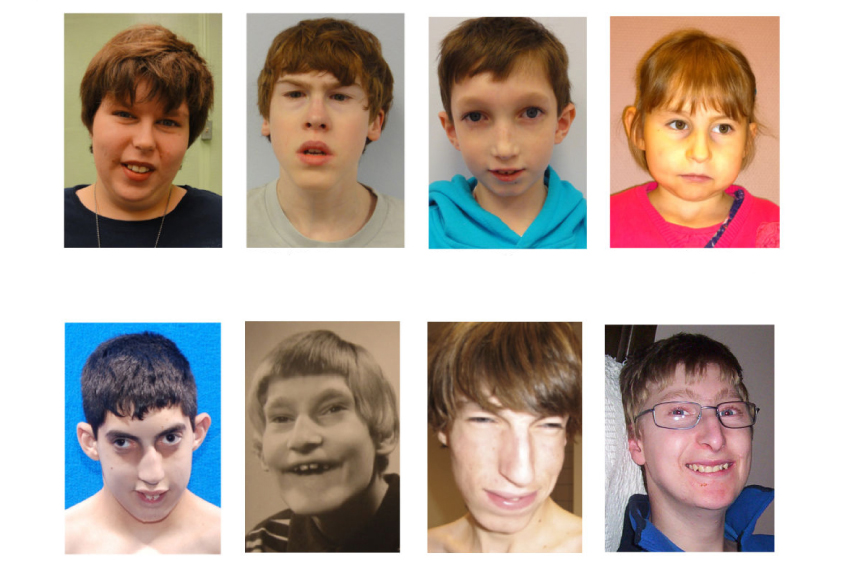
Small head, speech delay characterize mutations in autism gene
Children with mutations in a gene called DYRK1A, a leading autism candidate, have a distinct set of features, including intellectual disability, speech delay, motor problems and a small head.
Editor’s Note
The findings discussed in the conference report below were published 5 October 2017 in Molecular Autism1.
Children with mutations in a gene called DYRK1A, a leading autism candidate, have a distinct set of features, including intellectual disability, speech delay, motor problems and a small head.
These features set apart children with these mutations from those who have other forms of autism. Researchers reported the unpublished findings Friday at the at the 2017 International Meeting for Autism Research in San Francisco, California.
DYRK1A sits in a stretch of chromosome 21 that is duplicated in children with Down syndrome. It is best known for its contribution to intellectual disability and first emerged as an autism gene in a 2012 sequencing study. Since then, it has become one of the top candidate genes for the condition.
In a 2015 study, researchers characterized 15 children with harmful mutations in the gene and reported that the children have a distinct set of features, including intellectual disability and a small head.
In the new work, the same team examined 61 children with the mutations, including 10 children they characterized at their clinic. These children also share the same set of features, says Rachel Earl, a graduate student in Raphael Bernier’s lab at the University of Washington in Seattle, who presented the findings.
“We’re seeing this constellation of features that I think is very clinically relevant for understanding and really identifying these kids who are coming through our clinic,” she says.
Genetic detectives:
The work is part of a larger project that aims to deeply characterize children who carry mutations in some of the top genes linked to autism. The project is powerful because the researchers are characterizing each set of children in the same way, allowing them to make direct comparisons between groups, says Stephan Sanders, assistant professor of psychiatry at the University of California, San Francisco, who was not involved in the study.
“It’s a lovely bit of research,” Sanders says. “I’ve seen enough of these now that I expect to see syndromic things going on for each mutation, and they’ve done a beautiful job of defining it.”
Of the 61 children in the study, 42 were assessed for autism either directly or in their medical history; 18 of the 42 — or 43 percent — have an autism diagnosis.
When the researchers limit their analysis to only children who have had a full clinical assessment, the proportion of diagnosed children goes up to 70 percent. Some doctors may find it difficult to diagnose autism in children with such a broad range of medical concerns, Earl says.
Unique profile:
Nearly all of the 61 children have intellectual disability or developmental delay; all of them have speech delay, and 20 children were nonverbal at the time of the study. Most of the children also show difficulties with motor skills, eating and vision, and have abnormally small heads.
About 80 percent of these children have five or more of the features, compared with 0.3 percent of 1,981 controls with autism of unknown causes — or idiopathic autism. Each of these features is significantly more common in children with DYRK1A mutations than in those with idiopathic autism.
The researchers also looked at how each of the 10 children they assessed in their clinic compares with the population average for head circumference, intelligence, adaptive ability and age at first word.
They found that 9 of the children scored below the population average for head circumference. By contrast, children with idiopathic autism have enlarged heads. Likewise, 10 children with harmful mutations in CHD8, another leading candidate gene, also all had larger-than-average heads.
Finally, the researchers looked at head size in the parents of children with DYRK1A mutations. They found that each child consistently scored three standard deviations lower on head size than their parents.
For more reports from the 2017 International Meeting for Autism Research, please click here.
References:
- Earl R.K. et al. Mol. Autism 8, 54 (2017) Abstract
Recommended reading

Expediting clinical trials for profound autism: Q&A with Matthew State

Too much or too little brain synchrony may underlie autism subtypes
Explore more from The Transmitter

This paper changed my life: Shane Liddelow on two papers that upended astrocyte research
Dean Buonomano explores the concept of time in neuroscience and physics

